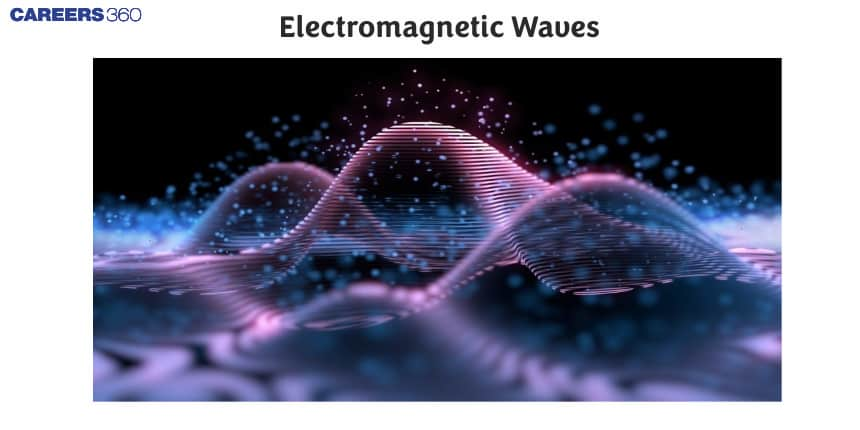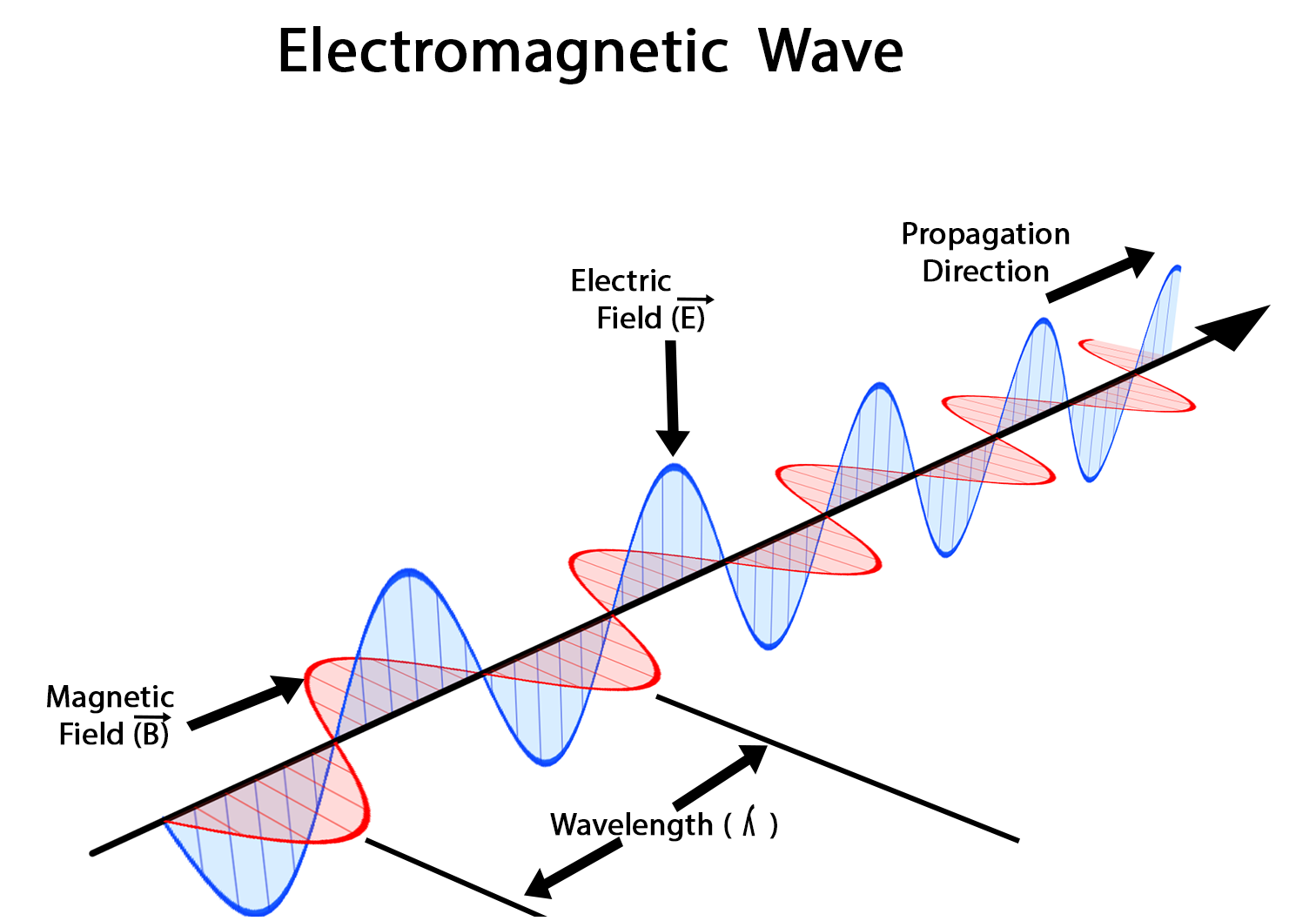Electromagnetic Waves - Definition, Mathematical Representation, Equation, Electromagnetic Spectrum, FAQs
In Physics, the abbreviation EM or EM meaning is given as Electromagnetic Waves. Electromagnetic waves are discovered by the physicist Heinrich Hertz experimentally and the basic idea of EM wave definition is taken from the Maxwell electromagnetic wave theory and as a result of Maxwell equations, Electromagnetic waves are considered to be the fundamental of the electrodynamics subject. In this article, let us see an introduction to electromagnetic waves, em theory, energy of em waves, and try to understand what are electromagnetic waves, what is the graphical representation of em waves and what these electromagnetic waves produce with some electromagnetic waves examples.

What are Electromagnetic Waves?
According to electromagnetic theory, electromagnetic waves definition is given as the waves which are formed due to the vibrations created between the Electric and Magnetic field. In short, Electromagnetic waves are composed of an oscillating electric field and a magnetic field. In a vacuum, the velocity of electromagnetic waves is calculated to be 3.00×108m/s (which is also the velocity of light). Electromagnetic waves travel through space at the speed of light. The velocity of an electromagnetic wave in the medium is given by the equation $\mathrm{V}=\frac{\mathrm{c}}{\mathrm{n}}$, where c is the velocity of light and n is the refractive index of the respective medium.
How are Electromagnetic Waves Produced?
When Electric fields are produced by any charged particles, some kind of force is exerted on the other nearest charged particle by the electric field. The charges which are positive in nature will accelerate along the direction of the electric field and the charges which are negative in nature will accelerate along the opposite direction of the electric wave field. At the same time, it is observed that the magnetic wave field is produced by the moving charges. The magnetic field exerts a force on other nearby moving charges and this force is always exerted perpendicular to the direction of their own velocities. (Note: only velocity should be considered here, not the speed of the particles). Thus the generation of Electromagnetic waves is due to the effect of some accelerating charged particles.
In an electromagnetic wave, the electric and magnetic fields are found to be perpendicular to the electromagnetic waves. An Electromagnetic wave can be assumed as the combined electric and magnetic field which propagates through free space with light speed. This oscillation of the charged particle has some frequency f and thus the resultant EM waves will also form with the same frequency f. Let us consider the wavelength of the Em waves is λ, then λ is given by =c/f where C denotes the velocity of light and f denotes the frequency of the EM wave. Thus the source of the Electromagnetic waves is the charged particles which are accelerated. In simple words, the production of electromagnetic waves is due to oscillating charged particles. Hope, now it is clear how electromagnetic waves are produced by oscillating charges or accelerated charged particles.
A graphical representation of the EM waves is given in the following diagram:
From the above-depicted image, The electric and magnetic fields of an electromagnetic wave are denoted by blue and red colour waves. It is found that the electric and magnetic fields themselves are perpendicular to each other and also perpendicular direction of electromagnetic wave propagation. If the electric field is in the x direction and the magnetic field is in the y direction, then the direction of propagation of the electromagnetic wave is given by perpendicular direction to both x and y direction i.e in the z direction. The direction of an em wave changes when the direction of the electric and magnetic field changes.
Related Topics |
Mathematical Representation of EM Wave
Let us take a plane electromagnetic wave which travels in the direction of the x. Now, The electric field of an electromagnetic wave is given by $E(x, t)=E m a x i m u m c o s(k x-\omega t+\phi)$ and the magnetic field of an electromagnetic wave is given by $B(x, t)=\mathrm{B}_{\text {maximum }} \cos (k x-\omega t+\phi)$.
Em wave equation for the respective electric and magnetic field in a plane electromagnetic wave is given by $\vec{E} \times \vec{B}$, and the velocity of the electromagnetic wave is parallel to $\vec{E} \times \vec{B}$.
where E denotes the electric field vector and B denotes the magnetic field vector.
According to Maxwell's electromagnetic wave theory of light, the electromagnetic wave formula is given by
$\begin{aligned} & \nabla \cdot \mathrm{E}=0 \\ & \nabla \cdot \mathrm{~B}=0 \\ & \Delta \times E=-\frac{\partial B}{\partial t} \\ & \Delta \times E=-\frac{\partial E}{\partial t} \mu \varepsilon\end{aligned}$
Electromagnetic Wave Equation Derivation
The Electromagnetic wave equation gives the propagation of Em waves in a medium or vacuum. It is a second-order partial differential equation and also it takes the wave equation in 3d form.
The homogeneous form of the electromagnetic rays is given by
$$
\begin{aligned}
& \frac{\partial B}{\partial x^2} \mu \varepsilon-\frac{\partial B}{\partial t^2}=0 \\
& \frac{\partial E}{\partial x^2} \mu \varepsilon-\frac{\partial E}{\partial t^2}=0
\end{aligned}
$$
Where $\mu=$ permeability in medium or free space $\varepsilon=$ permittivity in medium or free space
The intensity of EM Wave
Let us consider the electromagnetic waves that transport in free space Now, the intensity of electromagnetic waves I can be written as
$$
I=\frac{P}{A}=\frac{1}{2} C \varepsilon_0 E^2=\frac{1}{2} \frac{c}{\mu_0} \varepsilon_0 E^2
$$
The above equation gives the intensity of the electromagnetic wave equation in free space.
Where $\mu_0=$ permeability in free space
$\varepsilon_0=$ permittivity in free space
$\mathrm{C}=$ velocity of light (velocity of an electromagnetic wave in free space $=3 \times 10^8 \mathrm{~m} / \mathrm{s}$ )
Electromagnetic Spectrum
In a plane, electromagnetic waves travel in free space and are classified according to their individual frequency or their respective wavelengths. This wavelength differs from one light to the other. For example,
- The Wavelength of Visible light will be around from 400 nm to 700 ni
- The Wavelength of violet light will be around from approx 400 nm
- The Wavelength of red light will be around from approx 700 nm
Also read -
- NCERT Solutions for All Subjects
- NCERT Notes For All Subjects
- NCERT Exemplar Solutions for All Subjects
Application of Electromagnetic waves
There are plenty of applications of electromagnetic theory and electromagnetic waves in practice. Let us discuss a few of the applications for electromagnetic waves below:
The electromagnetic signal are used to transmit energy in free space
We can also find the application of the em waves in communication.
Electromagnetic fields and waves are also used in RADAR applications.
UV rays which are considered to be em waves are used in the detection of forged documents.
IR rays are used for night cameras and security cameras.
Frequently Asked Questions (FAQs)
The source of em waves is accelerated charged particles. In a plane em wave, the electric field oscillates sinusoidally.
The EM waves can expand as Electromagnetic waves. These waves are formed due electromagnetic effects caused by oscillating charged particles. These waves are the result of an electric and magnetic wave combination.
The electromagnetic theory is proposed by Maxwell and this theory tells that electric flux in a closed surface is proportional to the charge enclosed by the closed surface and the magnetic flux in a closed surface is considered to be zero.
The electromagnetic waves are produced when the charged particles oscillate. The accelerated charged particles produce the Em waves.
The answer for this question is YES. One of the best examples of em waves is light waves.The electromagnetic waves travel with the speed of light. The light waves are composed of both electric and magnetic parts.
Yes, the Em waves are eligible to carry energy E and Momentum p. Thus, Em waves can transfer energy through the free space.
